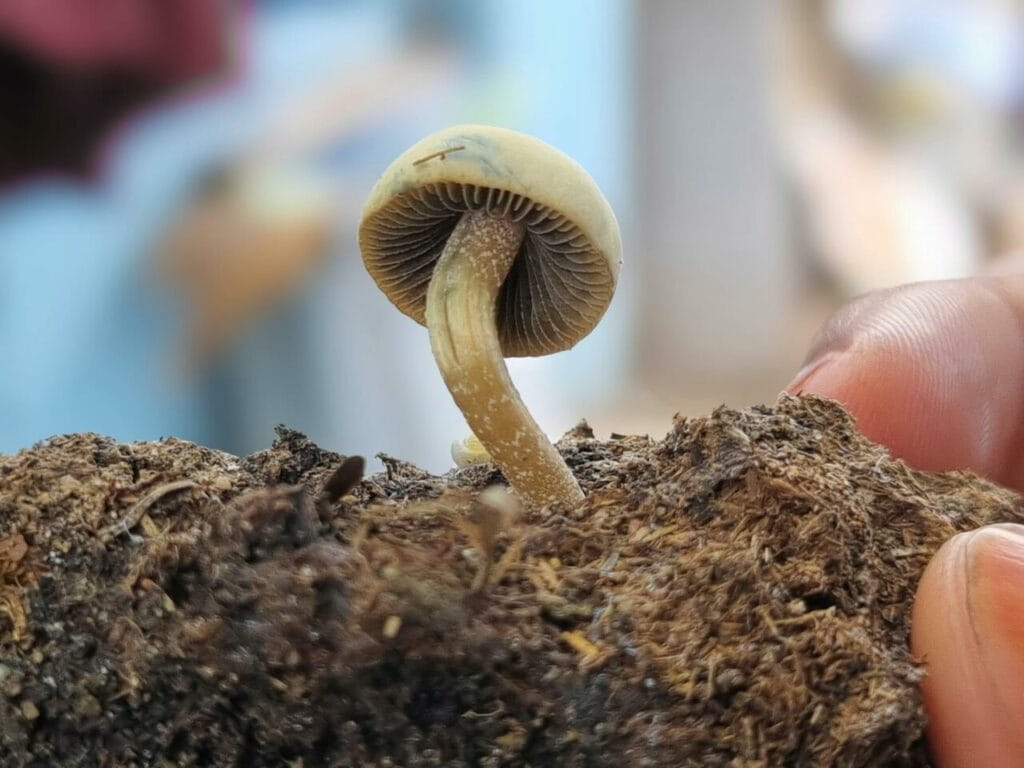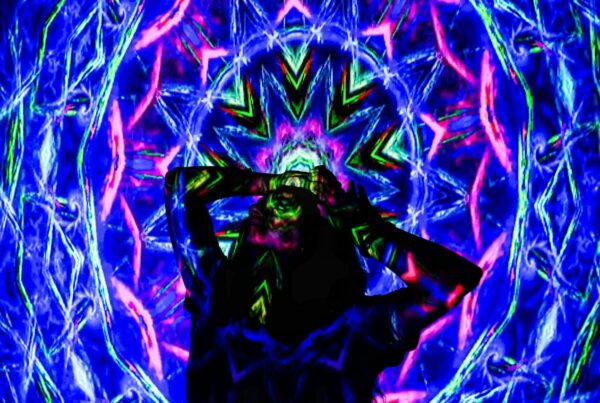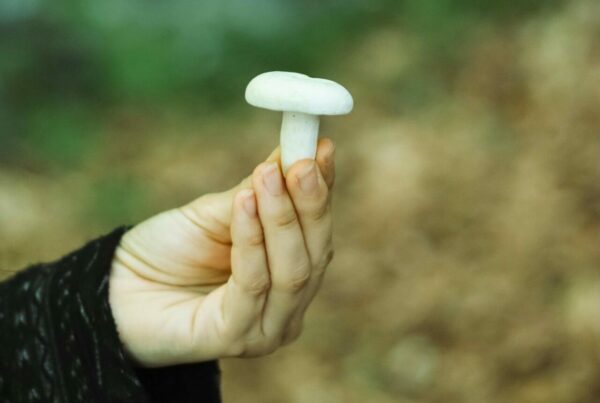As a result of serious injuries, a growing number of athletes are turning to unconventional methods of healing and recovery.
Among these unconventional methods, psychedelics such as magic mushrooms are becoming increasingly popular among athletes seeking relief and rehabilitation. This trend signifies a change in the sports community’s attitude towards alternative therapies as athletes search for innovative solutions to their physical and psychological challenges.
Many athletes admit to using shrooms outside a medical setting, suggesting they most likely source them from a magic mushroom dispensary. The use of magic mushrooms has significantly affected their mental health and the other challenges they face.
[toc]Key Takeaways:
- Comparable to or even exceeding the general population, athletes often grapple with mental health issues.
- Psychedelics could promote neuron growth, potentially offering therapeutic benefits for individuals recovering from traumatic brain injuries.
- The primary advantage of psychedelics is their potential to positively affect mental health, aiding athletes who are dealing with the aftermath of injuries or high stress.

Athletes’ Experiences as Highlighted in a CNN Article
Amy Woodyatt’s article on the CNN website, supplemented with George Ramsay’s contributions, provides insights into athletes using psychedelics to cope with severe sports injuries.
One notable story is that of Daniel Carillo, a former Canadian ice hockey player. He struggled with seven diagnosed concussions, leading to dementia-like symptoms, depression, anxiety, suicidal thoughts, and chronic headaches. These problems were so severe that even simple family outings became difficult.
Carillo started researching medical literature and came across a psilocybin study by the Imperial College of London. Instead of joining a clinical trial, Carillo decided to take a substantial dose in a more recreational environment.
Speaking to CNN, Carillo revealed his routine of regularly microdosing psilocybin, complemented by occasional usage of larger quantities. Furthermore, he maintains his health by regularly conducting brain scans and blood tests.
In addition to utilizing psilocybin, he emphasizes the importance of regular exercise, sufficient rest, maintaining a balanced intake of sugar and alcohol, and getting enough sunlight to preserve his overall wellbeing.
The Attraction of Psychedelics for Athletes
Carillo isn’t the only athlete who has resorted to psychedelics to help navigate life’s challenges. Numerous professional athletes have experimented with substances ranging from ayahuasca to LSD in a bid to enhance their overall wellness, with a particular emphasis on mental health issues.
According to a study led by Courtney Walton, an academic fellow in psychology at the Melbourne School of Psychological Sciences, elite athletes experience mental health problems at rates comparable to, or even higher than, the general population. Psychedelic therapy shows promise in addressing mental health issues among athletes, particularly those stemming from common issues like resistance to therapy, identity crises during career transitions and injuries, and managing interpersonal tension and conflicts.
The use of psychedelics for mental health treatment is particularly crucial for athletes. The brain governs multiple bodily functions such as organ regulation, thought processing, emotional regulation, memory storage, speech facilitation, and movement coordination. Individuals with impaired mental functionality may experience a decrease in their performance and focus.
Focus is essential in sports, and there is growing interest in how psychedelics might contribute to enhancing this concentration. As featured in a CNN report, NFL quarterback Aaron Rodgers openly discussed his personal experiences with psychedelics. He reported that consuming a brew containing ayahuasca, a concoction made from Amazonian plants with psychoactive properties, had a positive impact on his performance in football matches.
Expert Perspectives
Experts in the field assert that psychedelics have demonstrated efficacy in treating certain mental health disorders.
Robin Carhart-Harris, Professor of Neurology and Psychiatry at the University of California, told CNN Sport that the case becomes intriguing when viewed from the lens of psychological therapy, particularly in treating depression, with a few notable exceptions.
In terms of treating brain-related issues, Carhart-Harris pointed out the gaps in our knowledge about the use of psychedelics and brain injury treatment. Some research suggests that psychedelics might promote
While potential benefits of neuron growth have been observed, few studies have directly investigated their possible advantages following a brain injury.
Experts stress caution when considering the use of psychedelics for mental health and brain injury treatments, due to their potent effects. They warn that psychedelics could unintentionally induce psychological issues in individuals who are psychologically vulnerable.
Grasping the Interactions Between Psychedelics and the Brain to Understand Their Effects
The effects of psychedelics can vary depending on the specific kind consumed. For instance, consider magic mushrooms. Health Canada describes these as mushrooms containing hallucinogenic compounds like psilocybin and psilocin, which can cause sensory alterations. These modifications could include visual or auditory hallucinations, tactile sensations, emotional shifts, or even physical symptoms such as muscle cramps and alterations in heart rate or blood pressure.
Psilocybin does not directly cause these effects. Instead, it is transformed into psilocin upon ingestion, which is the compound that produces the effects. Psilocin stimulates serotonin 5-HT2a receptors located on cortical pyramidal cells in the brain.
David Nichols, a professor at Purdue University School of Pharmacy who has been researching psychedelics since the 1960s, explains that these cells serve as the brain’s primary computational units, functioning as the central hub for all processing. The stimulation of these receptors by psilocin leads to alterations in brain metabolic activity and neuronal connectivity, impacting cognitive function and perception.
Several theories propose how psychedelics could be beneficial in treating brain injuries. Classic psychedelics operate on serotonin receptors, known to help control inflammation, and can also suppress cytokine inflammatory cells. This dual role could enhance blood flow to injured areas and foster tissue recovery post-injury. In animal studies, DMT has proven effective in reducing brain damage caused by arterial obstruction.
Magic Mushroom Dispensaries: A Route to Therapeutic Use of Shrooms
Magic mushroom dispensaries provide a secure and dependable source for those seeking genuine magic mushroom products. These dispensaries ensure safe transactions by delivering goods through trusted courier services like Canada Post.
An online magic mushroom dispensary offers a broad selection of shrooms and psychedelic products. Each product possesses its unique characteristics and advantages, enabling users to select an option that best aligns with their needs and preferences.
| PRODUCT | SUITABLE FOR |
| Dried Shrooms | For those who like the flavor of mushrooms and seek quick, potent experiences |
| Edibles/ Drinks | For those who prefer to mask the taste and prevent nausea during extended journeys |
| Capsules | For those who wish to integrate shrooms into their wellness regimen via microdosing |
Conclusion
Psychedelics like mushrooms hold potential in supporting the mental health of athletes grappling with traumatic injuries and occupational strains. They offer varied strategies for symptom control, particularly when combined with therapy. This approach yields encouraging and sustained outcomes, as evidenced in numerous studies.
Although psychedelics have yet to gain formal acceptance as a treatment approach in the medical field, experts caution that the consumption of magic mushrooms necessitates comprehensive knowledge for safe usage.
Frequently Asked Questions
Do athletes consume psychedelics in high or low doses?
The consumption of psychedelics varies according to individual requirements and preferences. CNN interviews disclose a spectrum of usage patterns: some opt for infrequent high doses, while others prefer low doses to enhance focus or promote overall health.
Carhart-Harris proposes that there is significant potential in utilizing low doses of psychedelics to amplify mindfulness abilities. This can foster intense focus, facilitating the attainment of a flow state.
Can I buy magic mushrooms from a medicinal mushroom dispensary?
Medicinal mushroom outlets primarily provide a variety of mushrooms, such as Reishi, Lion’s Mane, Turkey Tail, and others. For magic mushrooms, consider patronizing a magic mushroom dispensary or a psychedelic dispensary. Exercise caution to avoid illegal magic mushroom dispensaries or vendors who misrepresent authentic psychedelics.
Should I combine talk therapy with the use of psychedelics?
In clinical experiments, researchers pair therapeutic sessions with psychedelic intake. Research suggests that this integrated approach can facilitate a deeper comprehension of oneself. Assisting individuals in deciphering the insights from high-dose mushroom experiences can enrich the psychedelic experience.
Is there a role for psychedelics in managing injury-related Can psychedelics help in pain management?
Psychedelics’ role in pain management is not yet fully understood. Nonetheless, former US rugby player Anna Symonds has suggested that cannabis may offer potential benefits in this domain.
F. Z. Zia and his team at the National Institutes of Health have delved into the possible employment of psychedelics in treating chronic pain. Their findings indicate that psychedelics might help lessen a variety of pain forms, including headaches, cancer-related pain, phantom limb pain, and neuropathic pain. They propose that psychedelics could serve as “effective supplements” in managing chronic pain and associated conditions like PTSD and severe depression.
Research on the role of psychedelics in acute pain management, however, remains limited.
How could athletes incorporate psychedelics into their routines?
Microdosing, or the consistent intake of small doses, is a distinctive method of psychedelic use. It has become increasingly popular among athletes due to its ability to reduce adverse effects while preserving therapeutic benefits. Embracing this method can lead to long-lasting outcomes, such as enhanced cognitive flexibility, which is vital for effective decision-making, particularly under high-stress situations.
Primary Reference:
Injured Athletes Turning to Psychedelics: A CNN Report
Authors:
Amy Woodyatt and George Ramsay
Further Reading:





